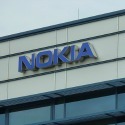Nokia gains troops for 25G PON fight against 50G PON
AT&T becomes the most high-profile service provider member of the 25GS-PON MSA Group as skeptics question the need for the technology.

The most high-profile telecom technology battles these days seem to be fought on the field of 5G. But a no-less-important shootout is also happening in broadband.
It began last year, when Huawei and some of its Chinese customers effectively blocked the standardization of 25G PON, a next-generation technology favored by Finland's Nokia. To the Chinese, 25G PON was a potential threat to the 50G PON technology they preferred. The Finnish response was to march 25G PON outside the International Telecommunications Union (ITU) and the normal standardization process.
Instead, Nokia set up what is now called the 25GS-PON MSA (for multi-source agreement) Group. Its evident hope was that 25G PON could thrive with a sufficient degree of industry support, regardless of ITU standardization. The list of founder members included a few impressive names, too, comprising AOI, Chorus, Chunghwa Telecom, Ciena, MACOM, MaxLinear, NBN Co, Sumitomo Electric Industries and Tibit Communications.
This week, it was boosted by the addition of seven new ones. The standout name is AT&T, a huge operator whose backing for 25G PON could prove vital. The others identified in the group's announcement are CommScope, Cortina Access, Feneck, HiLight Semiconductor, HiSense Broadband and Semtech.
Interest in 25G PON clearly goes beyond those firms and the few operators among them. Rakuten, which is building a new mobile network in Japan, sees a role for 25G PON in mobile transport, says Julie Kuntsler, a principal analyst with Omdia, a sister company to Light Reading. Dutch incumbent KPN, one of Nokia's fixed broadband customers, is another example of a potential user. Babak Fouladi, KPN's chief technology officer, says he is already collaborating with Nokia on 25G PON.
The technology would be a successor to XGS-PON, a 10Gbit/s standard that is currently the most advanced the industry has to offer. One attraction of 25G PON is that it should work in harmony with XGS-PON systems. "25G PON's ability to co-exist with XGS-PON and reuse existing fiber plant makes it extremely attractive to operators around the world," said Jeff Heynen, the vice president of broadband access and home networking for Dell'Oro Group, a market-research company, as quoted in the group's official announcement.
Adtran unconvinced
Still, the group is only a 17-member club in a global industry that features hundreds of broadband operators, and not everyone is convinced 25G PON will flourish. The skeptics include Adtran, a prominent US supplier that works with operators including the UK's BT and Germany's Deutsche Telekom. Ronan Kelly, Adtran's chief technology officer outside the Americas, reckons 50G PON is likely to prove the most cost-effective choice by the time GPON and XGS-PON no longer measure up – something he does not expect for another decade.
Today's update does not change his views about 25G PON, partly because the broader industry gave up on "non-standard implementations" years ago, Kelly tells Light Reading. Nor is he worried that 25G PON might actually succeed. If it does, and the ITU eventually backs it, stepping down to 25G PON would not be difficult for companies that have been working on the 50G PON standard, he says. Stepping up from 25G PON to 50G PON could be another matter.
Want to know more about 5G? Check out our dedicated 5G content channel here on
Light Reading.
Aside from telco interest, a possible industry concern about 25G PON is whether silicon components will be widely available. For the optical line terminals installed in central offices, companies could feasibly rely on field programmable gate arrays (FPGAs) rather than specialized chips, explains Kunstler. But when it comes to the optical network terminals (ONTs) near customer premises, these FPGAs would probably be too expensive, she says.
Don Reckles, who works in marketing for Nokia and sits on the 25GS-PON MSA Group's steering committee, says he cannot speak for individual members' component commitments. "However, all are actively involved in defining the standards/specifications for the technology," he wrote Light Reading by email.
Seeking to become less dependent on big chip suppliers, some of the main equipment vendors, including Nokia as well as Huawei and ZTE, have also begun developing their own media access controller chips for use in ONTs, says Kunstler. "One reason was simply financial, but the other reason was to end reliance on Broadcom."
Moreover, certain other members of the 25GS-PON MSA Group are in a position to develop new 25G PON components, she told Light Reading by email. "Tibit could decide to design a chip or add 25G PON to its 10G PON chip."
This is not the first time the industry has fought a battle over technology alternatives. What makes this fight somewhat different is the development of 25G PON outside the usual standardization process combined with recent geopolitics. When the 25GS-PON MSA Group came into existence last October, 650 group, a market-research company, warned of the possibility "that the world will split into two purchasing groups: Chinese and Western." With this week's announcement, that risk has not disappeared.
Related posts:
— Iain Morris, International Editor, Light Reading
About the Author(s)
You May Also Like




.jpg?width=300&auto=webp&quality=80&disable=upscale)







